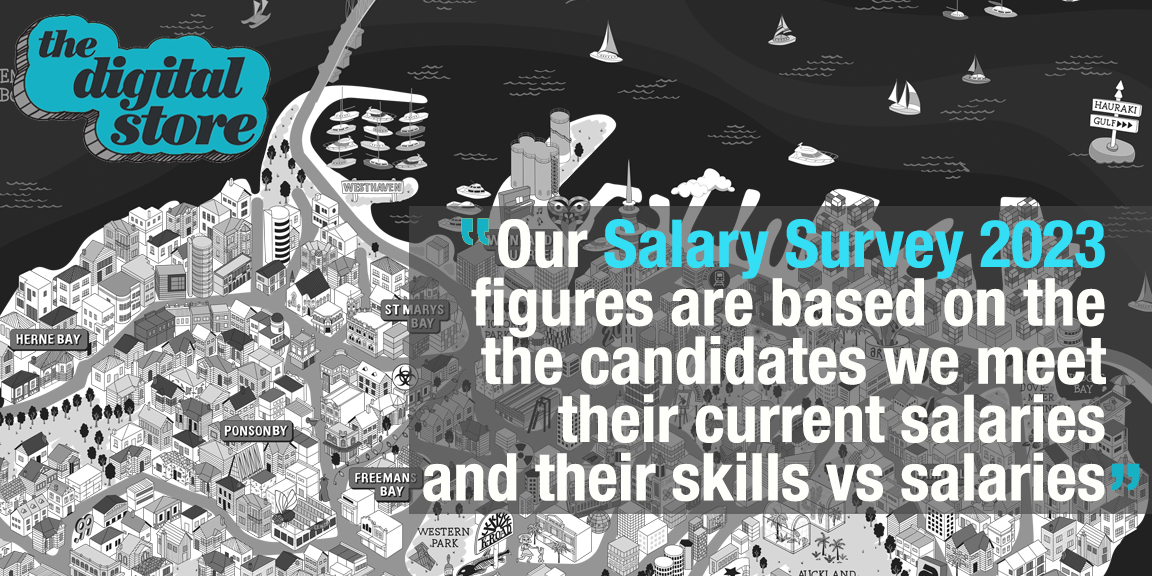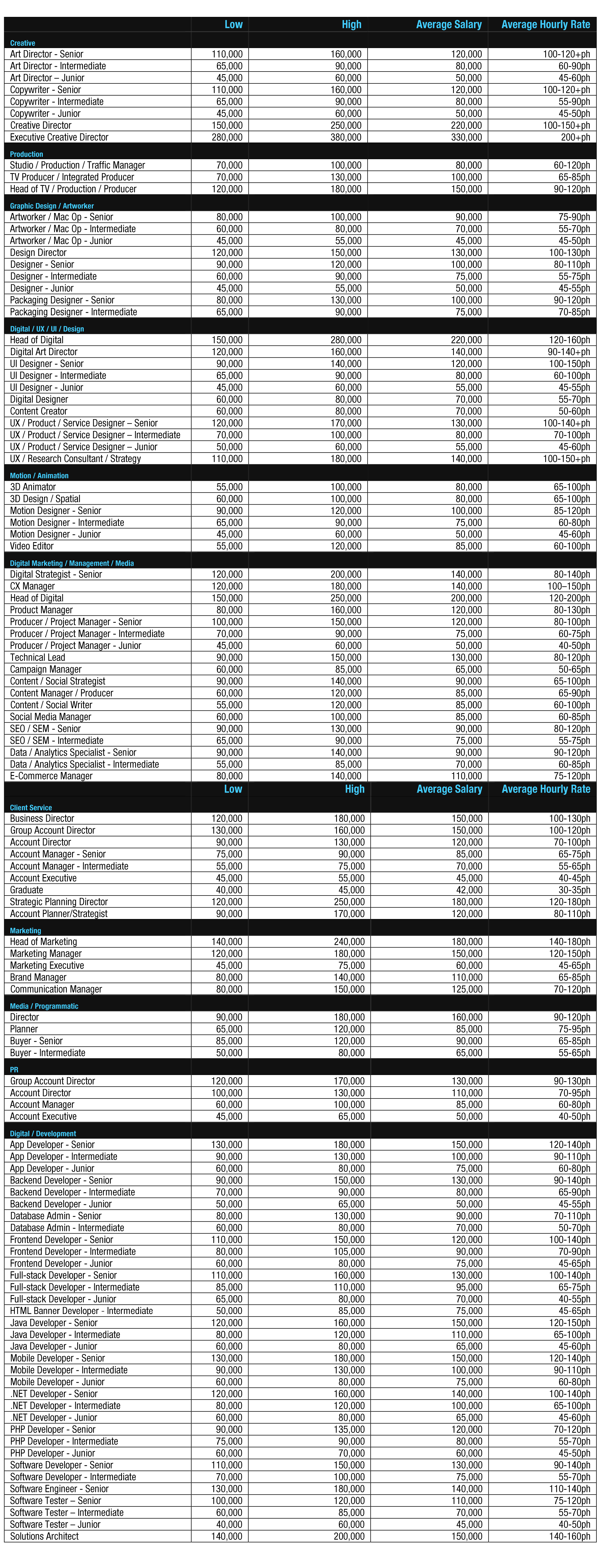The Digital Store New Zealand Salary Survey 2023

Our 2023 salary review is a guide on how the industry is performing - a gauge on the New Zealand market. Figures are based on the candidates we meet, their current salaries and their skills vs salaries. This combined with our client salary expectations gives an overall market expectation.
Changes and salary trends in the industry we have noted:
Digital roles continue to trend - more specialised and more technical.
More requests for candidates to fill specialist roles – specialist talent market is tight - taking longer to fill, and are at the higher end of market rates.
We are seeing an increase in data and insights driven roles, including CS, CRM/marketing automation.
Maori Design requirements continue to grow, with widespread requests from advertising agencies to corporate inhouse roles for authentic Maori designers. These range from knowledge of Te Ao Maori through to fluency in te reo, with the ability to interpret design for and by Maori audiences authentically.
Client Service / Account Manager candidates remain thin on the ground at all levels, especially in the PR / brand space.
Social and Content roles, even with a creative focus, now require a sound understanding of digital platforms, including SEO and paid advertising.
Ecommerce is continuing to be a huge growth area; with a lack of skilled candidates in this space, these roles are taking longer to fill.
Skills shortages were continuing to drive salary increases and expectations during 2022, however this has turned quickly in early 2023 with imminent recession.
Flexible working hours, hybrid and remote working / and remote-first are high on candidates’ priority lists.
Global networks are utilising their international network and skills sharing – especially on the developer side.
Employers are utilising contractors more, ensuring they have the right people at the right time – whilst keeping headcounts down.
Some senior level freelancers have priced themselves too high, and not flexible with their rate. Clients have not been prepared to pay, which has meant in 2022 we had a larger call for intermediate level freelancers.
A lot of freelance candidates only want to work remotely. This is really limiting their opportunities.
Due to supply and demand we have seen salary increase across UX / UI / Developers. Immigration is still very slow into 2023.
In 2022 we seen a mass exodus of intermediate level talent depart for overseas. We are now seeing the return of this level to the market.
Briefs are varying by nature from role to role, however we are seeing our clients looking for complementary skills like animation, digital design, and UX/UI additions.
The Digital Design and UX/UI landscape has become harder for candidates to navigate with varying definitions between each company. One Digital Designer may be working on eDM’s and landing pages, where as another position may involve HTML5, Figma and mocking up responsive websites. Clear Job descriptions can assist the most, as well as a thoughtful choice of job titles.
Now that the pandemic has somewhat subsided, the inflation in salaries (particularly in the digital space) are somewhat returning to their normal range. Whist there is still a high need for digital savvy creatives, the outlying salaries that we witnessed in the market last year are not as common.
Once again a great portfolio still rules in the Creative space. It’s the first thing clients look at for their roles and what is securing people interviews. Thinking how your work will be seen commercially and applied to the company you are applying to is an important step. Still showing a wide range of skill sets in important and not only showcasing creative that may be considered too niche is also something to think about.
Video meetings have become common place now in the post pandemic market, however when interviewing and going for potential job opportunities, showing up in person carries more weight than you might think. You miss a lot of interpersonal ques on a video call and it’s a lot easier to gauge fit with potential candidates / employers. Showing the interest and taking the time to show up for meetings demonstrates to the employer you are actively interested in the role. Opt for in person where possible.
Post Covid restrictions has seen demands return for in-house rather than WFH for freelance projects. Generally there is a level of flexibility, though having a face to face meeting for briefing and feedback rounds is greatly appreciated by businesses.
Overall increase in hourly rates to reflect the local economy – i.e. inflation, superannuation. With this said, the demand for midweight all-rounder skillsets have continued to be strong which has seen a higher increase in rate year on year compared to Junior and Senior levels.
Higher demand year on year for junior level creatives. This is more so attributed to the midweight shortage. Because of this, its super important to demonstrate as much experience as possible – freelance and internships do count, so this shouldn’t be disregarded in your CV. Its detail like this that can support you with negotiating rates.
Clients are now more frequently approaching freelance as a way to have a fall back for workload pipeline, rather than engaging with freelancers upon project signoff with specific deliverables set in stone. This means timelines, scope, and budget are ambiguous which can leave freelancers frustrated and missing out on committed projects.
While the push for digital continues, overall a balanced skillset is preferred by employers. For any freelancers looking to upskill over the next 12 months in UX/UI for example, just be mindful that you are not making your skillset too niche too early.

If you have any questions or queries, or would like salary $s for specific roles - contact Louise@thedigitalstore.co.nz
